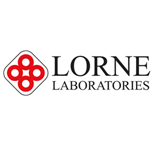Celebrating 50 Years of Lorne: A Brief History of Blood Reagents
11 June 2024

Lorne reagents have evolved over the last 50 years to provide state-of-the-art diagnostic tools for blood typing and diseases.
The Discovery of ABO Blood Groups (1901)
The discovery of blood groups by Karl Landsteiner in 1901 marked a significant advancement in blood testing. Landsteiner’s work enabled the development of the ABO blood typing system, which is essential for safe blood transfusions. The mid-20th century saw significant advancements in blood testing reagents, driven by the needs of medical diagnostics, transfusion medicine, and public health.
Humans naturally produce antibodies to the ABO blood groups. Thus, blood group A produces Anti-B antibodies, blood group B produces Anti-A antibodies. Group O produces both Anti-A and B, and the serum of those who are AB blood type produce no ABO antibodies (sometimes called AB serum). Initially, human serum was used to create blood grouping reagents and Lorne’s first blood typing reagents were from human donors.
Rh (D) Factor Testing (1940s)
The 1940s saw the introduction of the Rh (D) factor testing, again facilitated by Landsteiner and Wiener’s discovery. Reagents for Rh typing, Anti-Ds, were developed, allowing for safer blood transfusions by preventing haemolytic disease of the newborn. Lorne initially produced human-serum derived Anti-D and still produces a Precise Weak Anti-D as a control reagent to test pregnant women for the presence of Anti-D which may be harmful to the unborn child.
Monoclonal Antibodies (1975)
The hybridoma technique, developed by Köhler and Milstein in 1975, enabled the production of monoclonal antibodies. These highly specific reagents revolutionised blood testing, particularly in the detection and quantification of various blood groups.
As monoclonal antibodies became available for ABO, Rh (D) as well as rare blood groups, Lorne developed reagents exploiting the specificity and purity of these molecules. During the 2000s, Lorne Laboratories developed a range of products for ABO typing, Rh typing and rarer blood groups. This included the Anti-D Duoclone reagent capable of distinguishing a different, rarer form of the D blood group. Furthermore, Lorne produced reagents for extensive Rh typing including the C, c, E, e and Cw blood types. Also, a rare variant of the A blood group, Ax, can be detected using Lorne monoclonal reagents.
Lorne still produces some human-derived reagents for particularly rare blood groups when monoclonal antibodies are not available. Creating these reagents, is a particularly lengthy and skilled process requiring technical expertise.
Lectins (mid-20th century)
As well as antibodies for blood transfusion, another class of reagents has been used in blood typing: the lectins. Lectins are proteins that bind specifically to certain sugar molecules, playing a crucial role in cellular recognition and signalling. Their history in blood typing is intertwined with the broader development of immunohaematology and the discovery of blood groups. The first significant application of lectins in blood typing emerged in the mid-20th century. Researchers discovered that certain plant lectins could selectively agglutinate red blood cells based on the presence of specific carbohydrate structures corresponding to ABO blood group antigens. Lorne currently sells Anti-A1, Anti-H and Anti-N lectin.
Amongst the first blood group testing reagents Lorne produced were:
Dolichos biflorus lectin, which was found to agglutinate cells with the A1 antigen, making it useful for distinguishing A1 from A2 subtypes of blood group A.
Ulex europaeus lectin, which was identified as specific for the H antigen, that is present in blood groups O and weakly in A and B groups. This lectin could help in determining the presence of the H antigen in Bombay phenotype individuals, who lack A, B, and H antigens.
Despite being some of the first reagents produced by Lorne, these reagents are still produced today using the same trusted methods as 50 years ago, although regulations and testing is now much stricter.
Along with antibodies for blood group testing, Lorne has also developed reagents for use in transfusion diagnostics. These include reagents such as Serological Albumin, LISS-ADD, PEG-ADD and enzymes to enhance antibody reactions. Kits to elute antibodies of red cells to diagnose transfusion reactions and more recently a range of preserving solutions to store red cells are also included in Lorne’s portfolio.
Thank you to Dr Paul Richards, Product Quality Lifecycle Specialist at Lorne for his contribution to this article.
< Back to blog list
Share




